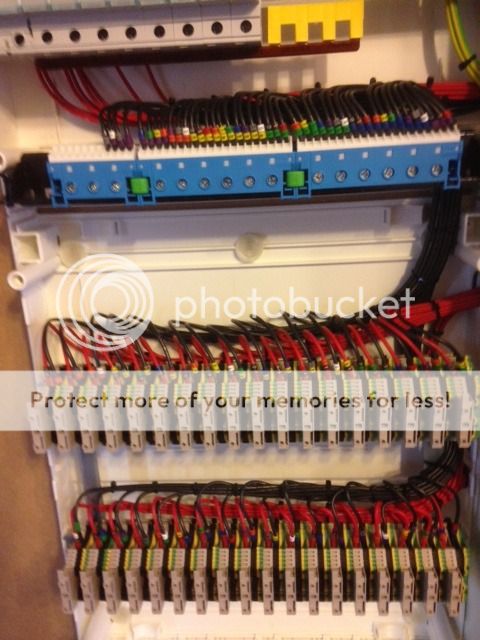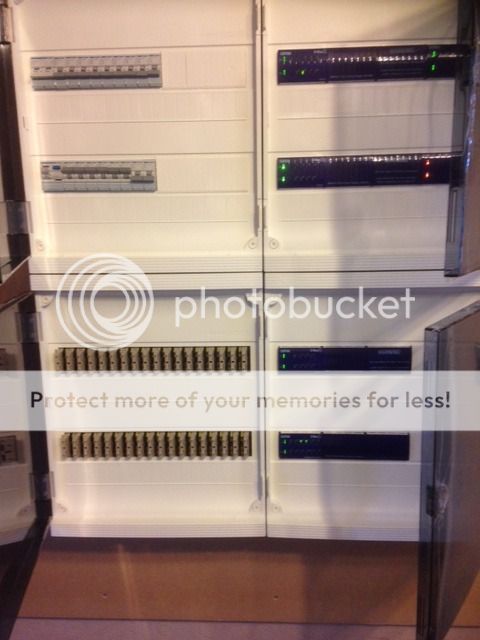D
dellboy13
Hi All
I am currently designing a complete home automation system based around CBUS dimmers and relays. I have now built the enclosures with the dimmers and relays in so I can start programming / testing them. I have going to get a full spark to install the actual cables and connect the lights.
All the CBUS units need breakers feeding them and fuses on their outputs, which I have wired using red and black 1.5mm cables to DIN rail terminators & MCB in the cabinet which are obviously not Harmonized. Is this OK, the spark (when I find one) will do everything external with Harmonized cable!
I am currently designing a complete home automation system based around CBUS dimmers and relays. I have now built the enclosures with the dimmers and relays in so I can start programming / testing them. I have going to get a full spark to install the actual cables and connect the lights.
All the CBUS units need breakers feeding them and fuses on their outputs, which I have wired using red and black 1.5mm cables to DIN rail terminators & MCB in the cabinet which are obviously not Harmonized. Is this OK, the spark (when I find one) will do everything external with Harmonized cable!











